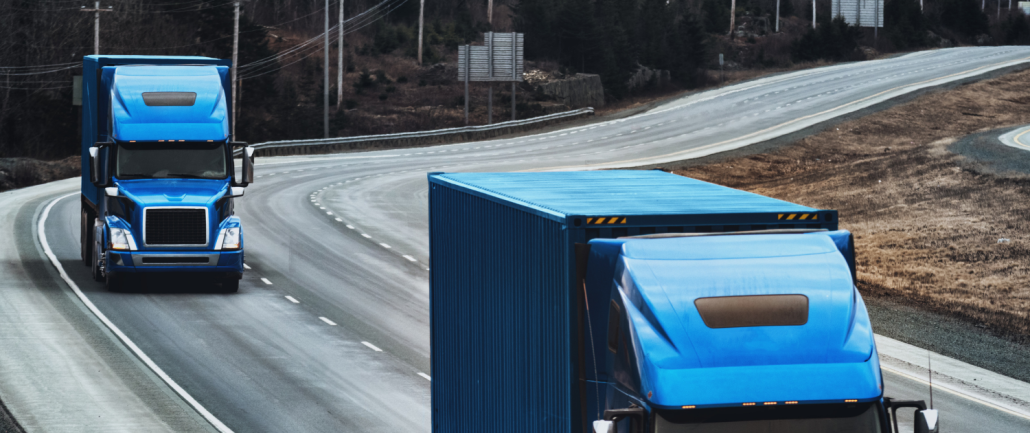 As 2025 wraps up, fleet safety remains a central pillar of successful trucking operations. With evolving regulations, advanced technologies, and shifting industry expectations, companies should refine their safety strategies to protect drivers, strengthen compliance, and reduce risk exposure.
As 2025 wraps up, fleet safety remains a central pillar of successful trucking operations. With evolving regulations, advanced technologies, and shifting industry expectations, companies should refine their safety strategies to protect drivers, strengthen compliance, and reduce risk exposure.
Keep reading to explore key developments shaping fleet safety today and four essential components that can help fleets build safer, more resilient operations.
Increased Regulatory Focus and Compliance
Staying compliant with safety regulations continues to be a foundational part of fleet safety. Regulatory bodies are placing greater emphasis on driver qualification files, training documentation, and audit readiness.
Fleets can expect more thorough inspections and heightened scrutiny during roadside and compliance reviews. Keeping driver qualification files complete, up-to-date, and easily accessible helps prevent violations that can lead to fines, operational delays, and negative safety scores.
Additionally, federal agencies such as the FMCSA are revising their Safety Measurement Systems and expanding requirements related to insurance, medical checks, and recordkeeping. Proactive engagement with these updates and dedicated compliance teams can help your fleet adapt quickly and avoid costly penalties down the road.
Embracing Advanced Safety Technology
Technology adoption is transforming how fleet safety is monitored and managed. Telematics platforms that integrate real-time vehicle data, predictive maintenance analytics, and driver behavior insights are quickly becoming mainstream tools. These systems allow fleet managers to track critical safety metrics, identify risky driving patterns, and intervene before issues escalate.
Predictive diagnostics, powered by advanced sensors, are reducing unexpected breakdowns and unsafe mechanical failures. Fleets using tools like this can see measurable drops in safety-related incidents because they’re able to schedule maintenance before a vehicle malfunctions on the road.
Video telematics and dash cameras also support accountability and coaching by giving safety teams clear visibility into driving events.
Cultivating a Safety-Driven Culture
A strong safety culture remains one of the most impactful elements of any fleet safety program. It starts with leadership setting clear expectations for safe behavior and continues through consistent communication with drivers. Regular safety meetings, routine sharing of best practices, and recognition programs for safe performance can all reinforce a collective commitment to safe driving.
Driver training is another critical focus area. Your programs should go beyond basic operational instruction to include scenario-based learning, fatigue management, and technology integration training.
Incorporating health and wellness support also contributes to safety performance. Encouraging rest compliance, addressing driver fatigue, and offering support resources can improve alertness and reduce the likelihood of fatigue-related incidents.
Key Program Components for 2026
To build and sustain a modern fleet safety program, fleets are focusing on several core components:
1. Clear Safety Policies and Documentation
Establishing documented safety policies gives drivers concrete guidance on expectations and procedures. Written policies help ensure consistent application across all teams and serve as the backbone for training and enforcement.
Be sure to conduct review and updates of these documents to ensure they remain relevant with changing regulations and operational needs.
2. Proactive Inspection and Maintenance
Routine vehicle inspections and preventive maintenance reduce the chances of mechanical failures that can turn into safety hazards on the road. Implementing standardized pre-trip and post-trip inspections encourages drivers to identify issues early and report them promptly while also following required federal inspection and reporting regulations.
3. Emergency Preparedness and Response Plans
No matter how strong your safety program is, in the commercial driving industry, some incidents will still occur. Having a documented emergency response plan ensures drivers know exactly what to do in a crisis. Ensuring there is clear contact information, defined decision trees, and updated training on these procedures minimize damage and support faster recovery.
4. Data-Driven Decision Making
Fleet safety is increasingly about leveraging data and technology to guide improvements. Dashboards that track key performance indicators like collision frequency, harsh braking occurrences, and compliance trends make it easier to spot trouble areas. These insights enable targeted coaching, resource allocation, and strategic planning.
For more ways to stay ahead of the curve in the transportation industry in 2026, be sure to check out the rest of our Employer Blog posts and connect with us on social media.


 In the trucking industry, success depends on how well your fleet operates on the road each day. While factors like vehicle condition, routing, and logistics all play vital roles, driver behavior is one of the most powerful influences on fleet performance.
In the trucking industry, success depends on how well your fleet operates on the road each day. While factors like vehicle condition, routing, and logistics all play vital roles, driver behavior is one of the most powerful influences on fleet performance.  Keeping trucks on the road and running efficiently is one of the most important responsibilities of a fleet manager.
Keeping trucks on the road and running efficiently is one of the most important responsibilities of a fleet manager. 






